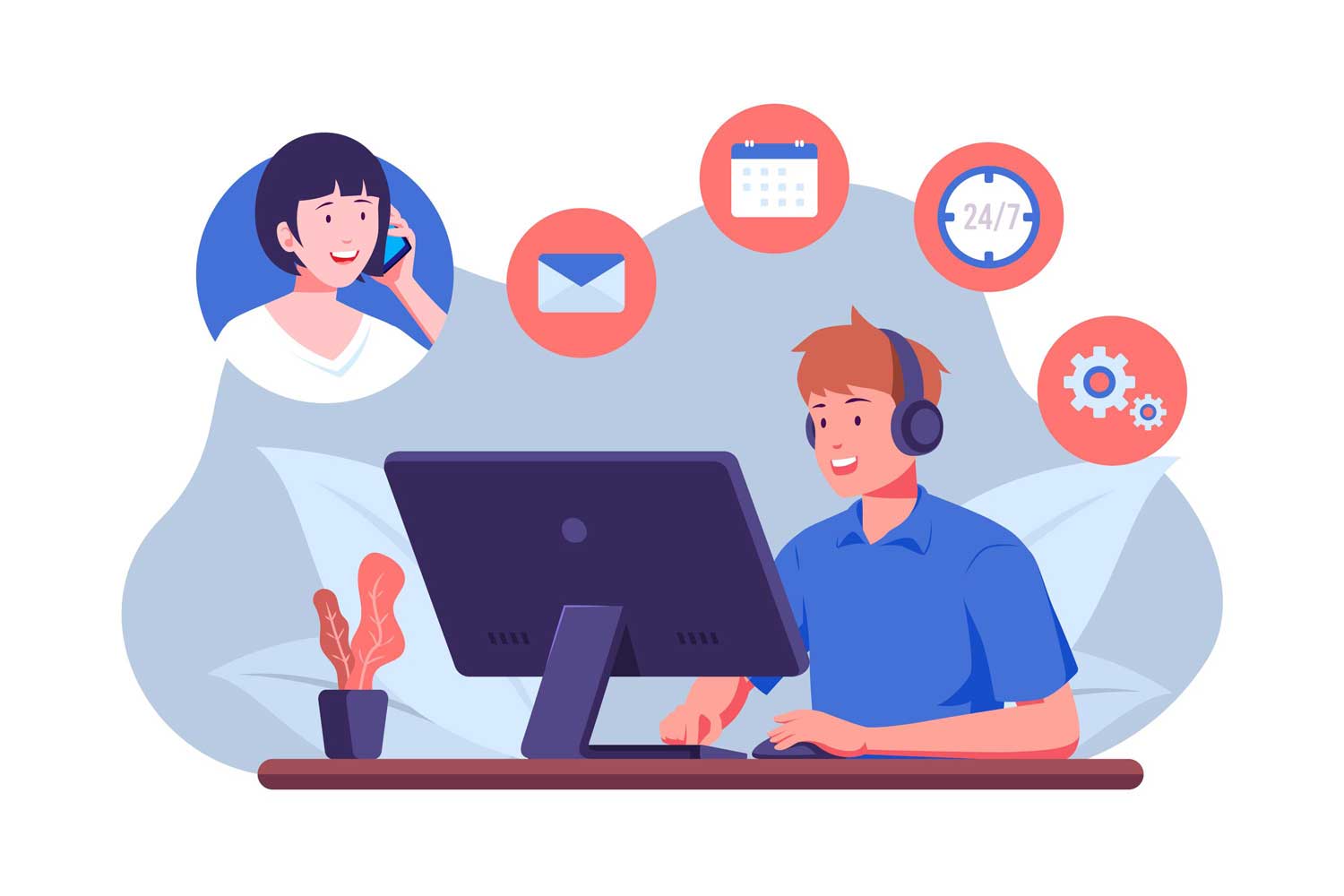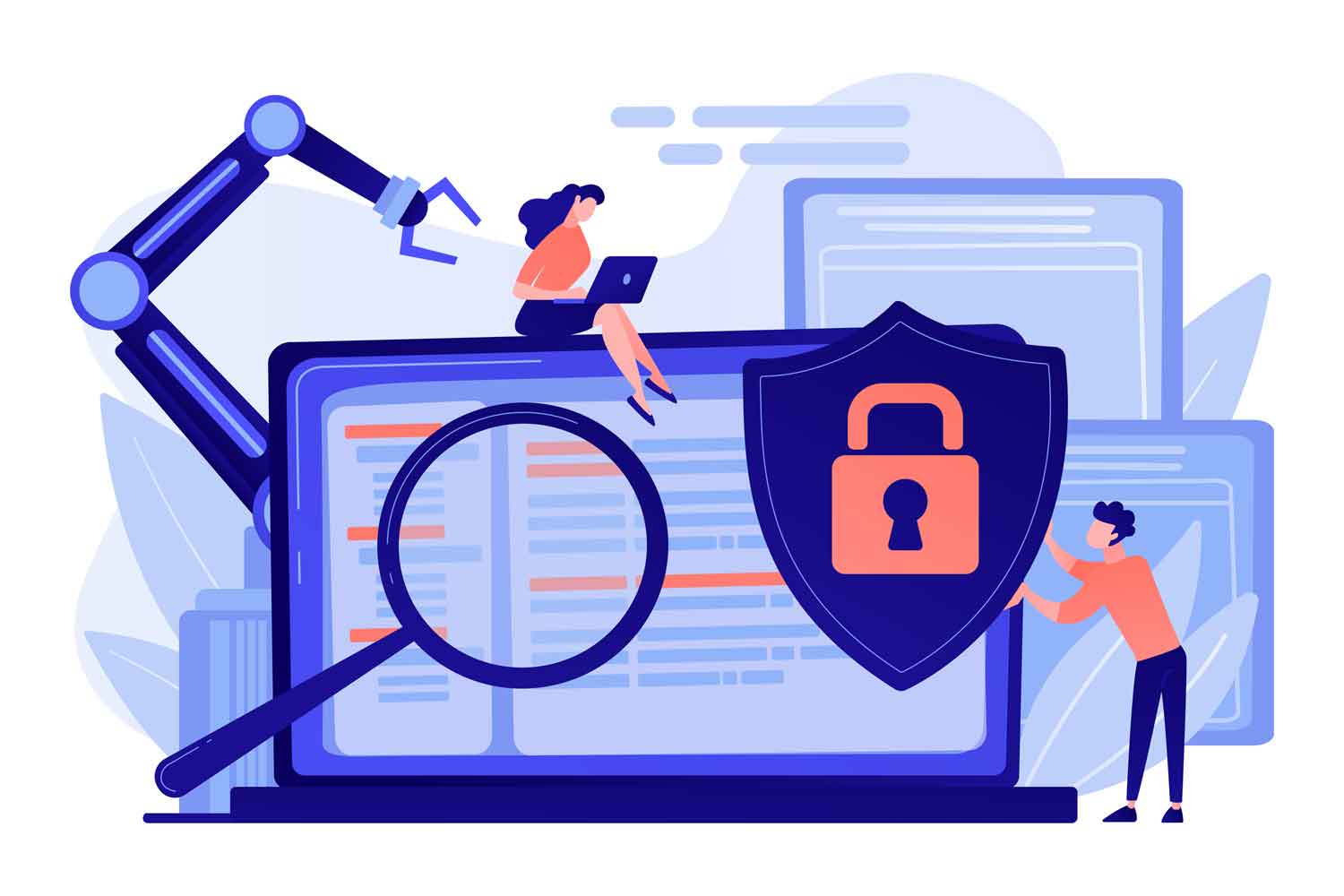Back in 2009 and 2010, call centers, or “contact centers” as they’re more appropriately termed today, would use “trunk line” software. You definitely encountered this if you ever called a very large company, and had to deal with the robotic voices on the other end.
Essentially, “trunk lines” sent telephone calls to the web, where they could be automatically processed. Said automation is vastly desirable to the position previously being held by a physical operator, who would direct a given call. In fact, such trunks extended the capability of call centers overall.
Using automated robotic receptionists, trunk lines would separate calls based on a variety of automatic factors, the end goal being that callers would be automatically sent to the right department without the business spending $40k+ a year per staffer after taxes, benefits, insurance, materials, and salary costs factored in.
The tradeoff came in customer service; callers might have to go through the automated menu and wait on “hold” before they actually were able to talk to anyone. Still, actual hold times tended to be reduced, because more appropriate customers were sent to a given department, reducing that departments’ call load. So what does this mean for your contact center?.
A New Environment, and the Rules That Define It
Today, virtually all contact centers use call-routing software as a means of streamlining business and reducing operational complications for everyone involved.
As 2022 begins to build momentum, a number of iterative leaps have advanced automated technology to a point where even more functions of a given contact center can be automated. We’ll explore that specifically here, as well as other areas of call center software acquisition you definitely want to think about for best results overall.
#1 Network OS Compatibility
All computational devices have some sort of root operational software that defines overall functionality. This is the “Operating System”, or “OS”. Now different contact centers are going to have different OS considerations. A decade ago, virtually all contact centers would have an on-site server array, usually in a special room, that acted as the digital “heart” of the business.
This network would function utilizing its own operating system; one that might be entirely separate from the device OS on end-user devices. Many contact centers would use Windows devices that were cutting edge at acquisition, and maintained four or five years past their “expiration date”, if you will, in reference to Moore’s Law and its consequences.
The thing is, what software works on an end-user device may not necessarily be harmonious with primary network operational needs. Usually, this won’t be a problem, but ten years ago it was definitely a consideration. As of 2022, there’s a new complication: cloud computing.
Many call center operations today utilize cloud-based networks. Said networks should be able to host any sort of software, but some options may have different space and security considerations based on how the cloud network is run. Prior to acquiring software of any kind, you need to look into how it will perform on whatever network OS you’re rooted in.
#2 How Software Affects Scaling Out
For the most part, you’ll find software options today are designed with things like cloud computing and network “scale-out” in mind. Even so, be sure to check pricing structures and related information. With cloud computing, there are both HaaS (Hardware as a Service) and SaaS (Software as a Service) options to replace on-site versions of the same.
You don’t own the hardware or software in a cloud situation, you’re renting it like a tenant in an apartment building rents a unit. As long as the monthly fee comes in, you get the SaaS or the HaaS. That means several things.
First, you’re actually may get better tech service, depending on local options in the area where your contact center is located. Security may even be more qualitative. However, since you don’t technically own a cloud-floated option, it may be that some business interests now have access to your data that you would rather not.
There is better security with the cloud, but since it’s “rented”, as it were, you’re dealing with a digital “landlord”, and he’s got the keys to your data whenever he wants to use them. So if you’re about to scale out, and you’re a massive client for the provider, this could have a collaterally unexpected effect on costs. Usually, it won’t, but keep that in mind.
#3 User Friendliness: Piercing the “Veil”
Regardless of whether you’re using on-site software or cloud-hosted hardware, those who have to interact with it daily shouldn’t have any trouble in the process. Software needs to be intuitive and user-friendly; as much as is possible, anyway. You don’t want an employee on the phone stalling for a half-hour on a sales to call because the software crashed.
That may sound like an exaggeration, but it tends to be the rule rather than the exception in many call centers. The cost of getting up and running means maximizing hardware and software investment. This was mentioned earlier through the “Moore’s Law” reference.
Essentially, computers tend to reach the end of their life cycle within 3 to 5 years. Certainly, you might buy an Apple MacBook Pro that’s been functional for a decade; but buying that computer new is going to run you up to $2k+, and a used model after a decade will still be $700+. For a call center desktop, a Windows device may be well under $1k.
If you have 150 representatives on the phone, that’s $150k in $1k computers; or $50k a year in hardware if you get 3 years out of those devices, and $30k if you get five years. Get ten years out of them, and you’re looking at only $15k a year. Call centers try to push the margins here, and it gets expensive. You need to be sure your software choice will remain usable until you can get new devices.
#4 Reviews and Testimonials of Other Call Centers
The call center industry is massive and international; though it’s worth mentioning some countries have more investment in this industry than others—the Philippines come to mind. Here’s the point: since so many countries need so many call centers, you will be able to find industry reviews and testimonials that may recommend or excoriate certain software options.
Whether you’re looking at software to process sales, customer accounts, or the management of employees in your call center in human resources capacity, you should be able to find some sort of review or testimonial collection that can help inform your choice. Be savvy as you look into such reviews and testimonials; some are contrived.
#5 The Automated Angle: What Options Are There?
Next, a good idea is to look into software that pays for itself. All software should reduce operational costs and expand productivity. Sometimes cost reductions come directly, from more streamlined solutions eliminating expenses. Sometimes savings come collaterally, from optimization promoting increased profits offsetting software implementation costs.
To that end, automation options can do a lot to save time and money. Imagine a software suite that costs less than a single employee over several years to acquire, but does the work of a dozen or so in that time; and many more as you expand the use of said software. That’s what cognitive Robotic Processes Automation software has the potential to do when used properly.
So just what is cognitive Robotic Processes Automation, or RPA? Essentially, it’s a suite of software options that can identify repetitive tasks which don’t actually need conscious management to achieve. This can be done through AI, reducing time spent by operational staff in oversight. With cognitive RPA, just tap a button and the job is done; plus jobs you didn’t even realize could be done automatically.
Without such software, you’ve got to assign someone to the task, and no matter how efficient they are, they can’t get it done as fast as software would be able to. At the end of the day, effectively-applied RPA can save enough money that scaling out might not cost anything more than traditional ops expenses.
#6 Avoiding Redundancy: Don’t Get Something You Have
Some software only performs a few things that are different from certain options you already have. There’s no point in acquiring that sort of software unless the differentiating function provides value in excess of associated redundancy. Carefully work with tech departments to get the balance right here.
#7 Amenability to the Needs of Clients Your Center Serves
Something else to think about is how software impacts the sort of individuals your call center interacts with on a regular basis. That includes both the client you’re calling on behalf of, and those you speak to on the phone. Even if your call center is central to a big business, and not outsourced by a larger client, software amenability all around is a consideration.
#8 Recommendations from Industry Consultation
What do industry consultants have to say? They can help you know if one software option or another is “buggy”, if it is worth acquiring, or if it’s a good idea that needs a little more time to embed itself in the industry prior to your acquisition. As the old adage goes, inform what you do through the advice of many counselors, and you’re more likely to succeed.
#9 Associated Costs of Varying Software Options
Last but certainly not least, don’t rule out expenses. Some software is insanely expensive, and just isn’t worth it. Some software is so cheap you can’t believe it, and it will do the job just fine. Some options are more difficult to define. Consultants are helpful here as well. High cost and high Return On Investment (ROI) are worth it. Low cost and low ROI might not be.
Finding the Most Effective Software for Your Call Center
You’ve got a moving target on your hands when it comes to calling center software. By the time you choose it, acquire it, install it, and teach all your staff how to use it to its peak capability, you’re in a position where you might have to start looking for new software. That said, what you stand to save, and what you stand to gain, tends to make the process worth it.
With that in mind, carefully choose your software. Look into costs and consultation recommendations. Factor in how clients your call center interacts with on the phones and in managerial offices will be able to interface with varying software options. Definitely consider automated options like RPA which are cost-effectively revolutionizing the industry today.
Consider reviews and testimonials carefully, be sure you find options that are user-friendly to those who will use them, on the phones or elsewhere, think about whether the software will affect scaling out (as well as what that effect will be), and understand how the OS you’ll be using the software with affects its overall implementation.
Though the tech world moves fast, you can save a lot of grief by taking your time before getting involved in something requiring several years for investment maturation.
[sc name=”5173″][/sc]









